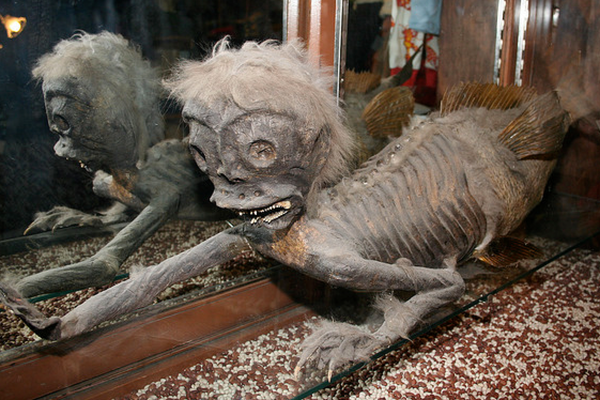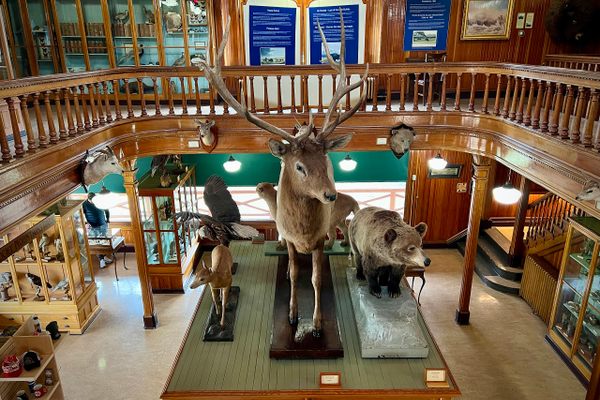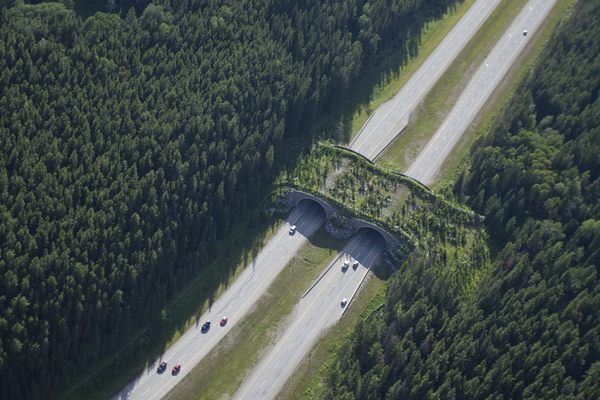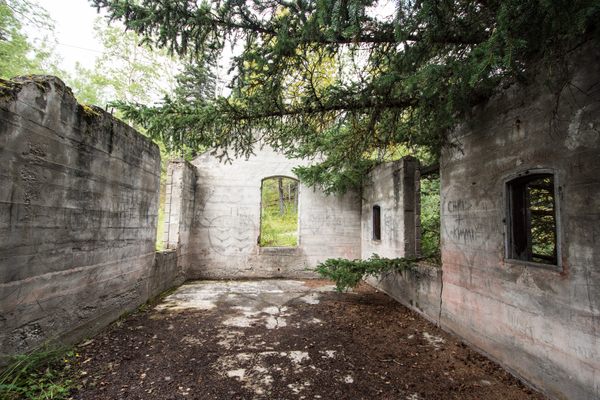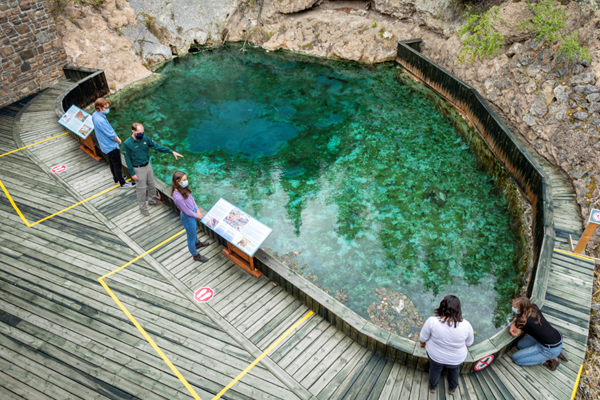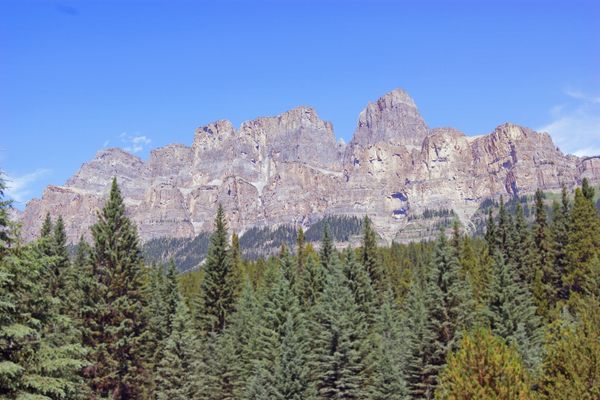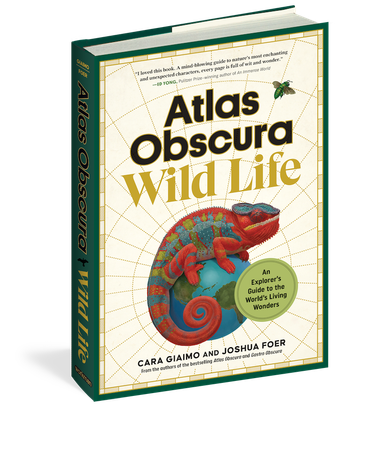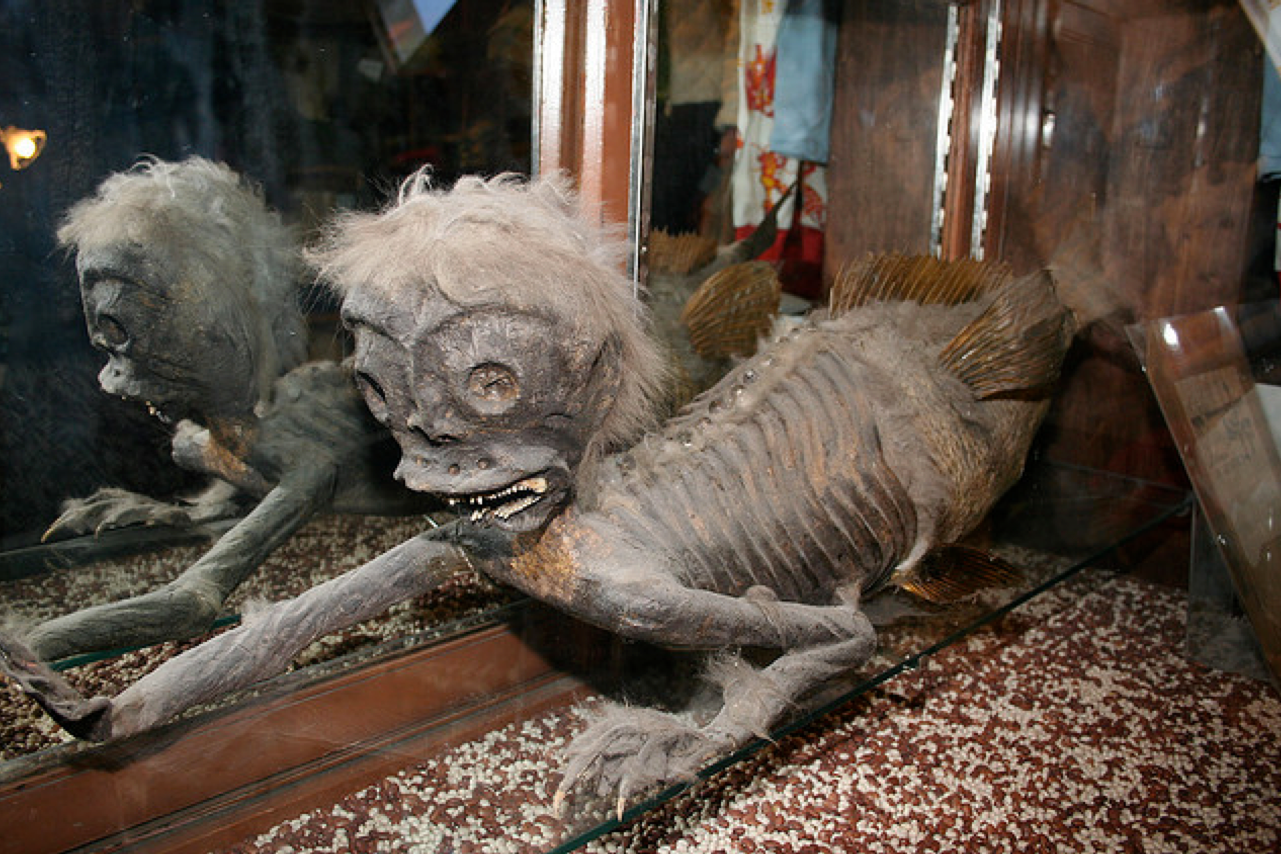
1. Banff Merman
Quietly watching over the eclectic finds in the Banff Trading Post is the shop’s oldest resident: Mr. Banff, the Merman. The mysterious half-fish, half-terrifying-taxidermy-experiment was most likely acquired around 1915 by the shop’s legendary proprietor Norman Luxton, a gold prospector and canoe explorer who almost died on an attempted expedition around the world. Mummified mermaids have a long history, with some dating back centuries, but they really hit their stride as part of the sideshow circuit when P.T. Barnum got into the action with an elaborately planned hoax in 1845. Barnum’s wild success led to a peak in popularity for this particular kind of fanciful creation, and they joined sideshow line-ups and wonder cabinets around the world. But Banff may have the only merman.
Banff Merman, Banff Trading Post, 101 Cave Ave., Banff, Alberta, Canada
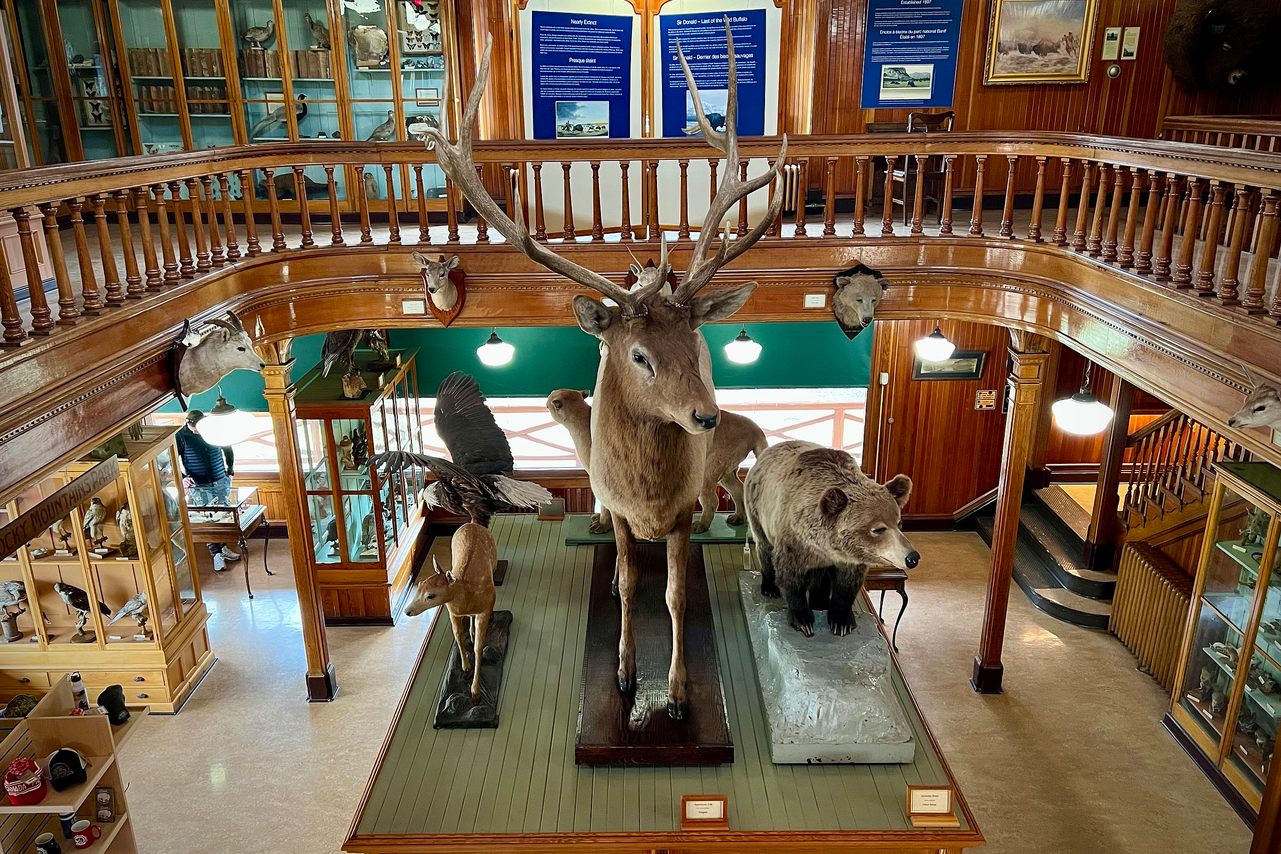
2. Banff Park Museum
The Banff Park Museum exists because of the tireless work of Norman Bethune Sanson, curator from 1896 to 1932. He hiked over 32,000 kilometers and never passed an unusual specimen without collecting it for study and display. The oldest item in the museum is a male merganser collected in 1860, and the second floor contains more exotic specimens. Sanson also looked after the Sulphur Mountain Cosmic Ray Station, hiking up the peak and reporting his observations to Ottawa for over 33 years. The highest point of the mountain was named Sanson Peak just six months before his death.
Banff Park Museum, 91 Banff Ave, Banff, Alberta, Canada, T1L 1K2

3. Banff Springs Hotel
Few other hotels in North America can rival the grandeur of what's been called “the Castle in the Rockies.” Opened in 1888, the hotel looked almost nothing like it does today. The original structure was built in the Scottish Baronial style, clad in shingles with stone accents, featuring dormers, turrets, and roof lines. In a sense, it was a $250,000 mistake; the builder goofed and changed the intended orientation of the building, turning its back on the mountain vista. A major overhaul lasted from 1906 until 1928, crowned by the 11-story Painter Tower, which holds 300 rooms and was the tallest building in Canada upon completion. It’s been weatherized to operate year-round and is now home to a renowned spa. It’s also allegedly haunted by a former bell hop and bride who fell to her death in the 1920s.
Banff Springs Hotel, 405 Spray Ave., P.O. Box 960, Banff, Alberta, Canada, T0L
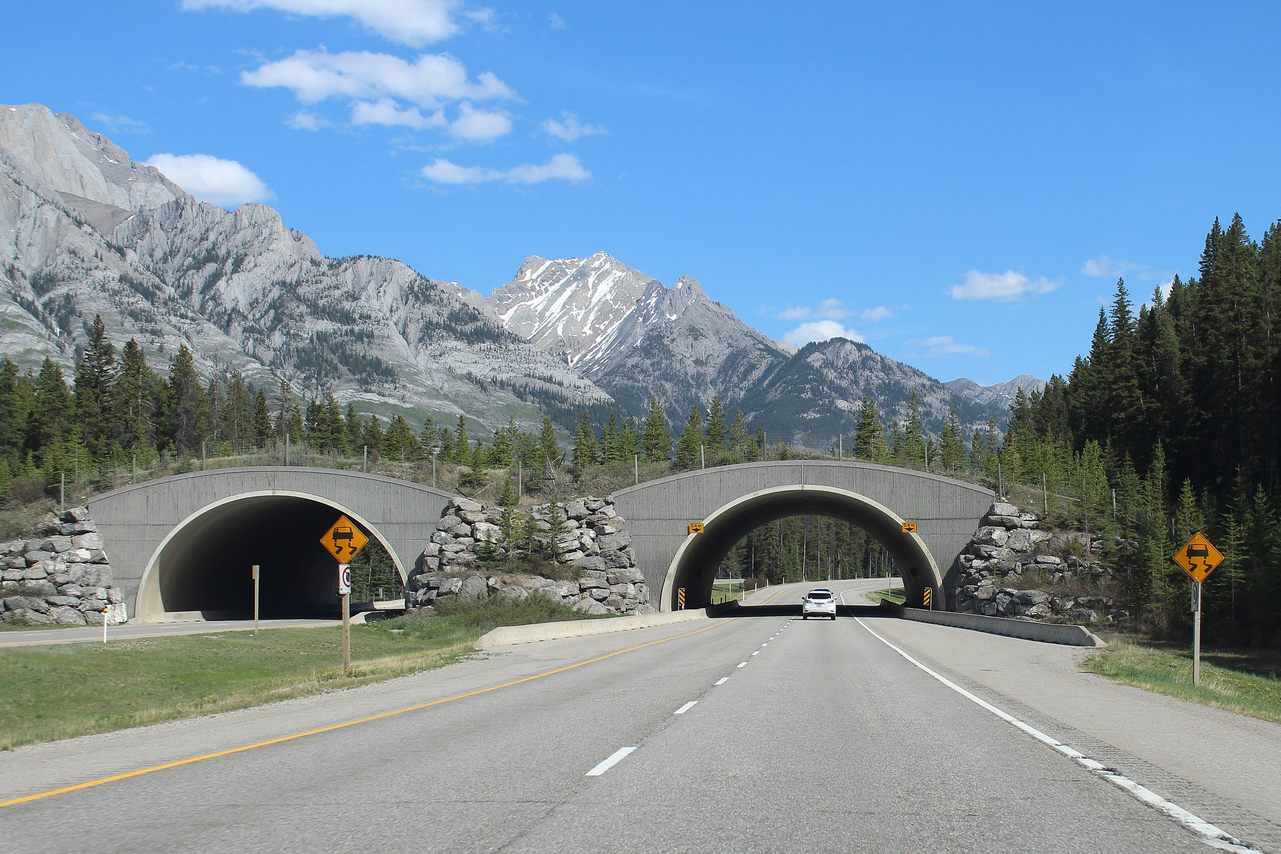
4. Banff Wildlife Crossings
Collisions between vehicles and wildlife—from elk to snakes—take a toll on the environment. Not only can these accidents cause harm for both the driver and animal, roadways that cut through natural habitats can also cut off migration routes. This has been mitigated by several dozen bridges that help animals cross the Trans-Canada Highway. The crossings resemble grassy hilltops, dotted with trees and flowers. The idea first came about in 1978. Today, there are now 48 crossing structures, including underpasses and overpasses. Data has shown that 13 large mammals species, from bears to cougars to bighorn sheep, have used the structures in Banff more than 200,000 times. These wildlife crossings have served as a model for other countries looking to protect wildlife around the world.
Banff Wildlife Crossings, Trans-Canaday Highway, Improvement District No. 9, Alberta, Canada

5. Bankhead Ghost Town
Once a bustling mining town operated by the Canadian Pacific Railroad, the crumbling ruins of Bankhead now lie abandoned up in the mountains of Banff National Park. What one historian dubbed “the 20-year town” was established in 1903 to provide coal to CPR locomotives and Banff Springs Hotel boilers. But the unusually brittle coal was far from ideal for the railroad, which immediately began to crumble into dust. Several labor strikes in Bankhead won the workers higher wages, but exacerbated the mine’s cash flow problems. After an April 1922 walkout, CPR closed the mine, economic activity dried up, and the residents drifted away. In 1930, the National Parks Act forbade future logging or mining in Banff, and Bankhead’s fate as a ghost town was locked in place.
Bankhead Ghost Town, Bankhead, Banff National Park, Bankhead, Alberta, Canada
6. Castleguard Cave
Being the only non-ice cave under a glacier in the world, this subterranean den is a unique blend of glacier and cave. Calcium deposits have created soda straws and rare cave pearls. A shrimp-like animal lives here that exists nowhere else in the world, the Castleguard Cave Amphipod, which may have survived the ice age by sheltering in this underground cavern. The only way to get through the entirety of this cave is by scuba diving, and a permit is needed from Parks Canada. An unpermitted caver named Mike Boon had a mysterious adventure down here, which led to a few areas being named after him, including a dangerous shaft called "Boons Blunder," which rapidly floods the cave when the weather warms.
Castleguard Cave, Improvement District No. 9, Alberta, Canada, AB T0L 1E0

7. Cave and Basin National Historic Site
First Nations people had been enjoying the warm, mineral-filled waters in a cave nestled in Sulphur Mountain for possibly 10,000 years before three Canadian Pacific Railway workers claimed to have found it in 1883. Frank McCabe and brothers William and Tom McCardell built a fence around the cave and a cabin near its entry, and petitioned the Canadian government for ownership of the land. But the country needed to finance the railroad and wanted the revenue from the springs. The government won the competing lawsuits and established Canada’s first national park, first naming the site Hot Springs Reserve, then Rocky Mountains National Park in 1887, then finally Banff National Park in 1930. Visitors to the steamy site enjoy hiking, boardwalks, historical tours, and admiring wildlife like orchids and an endangered snail only found in the area.
Cave and Basin National Historic Site, 311 Cave Ave, Banff, Alberta, Canada, T1L 1K2

8. Columbia Icefield
The Columbia Icefield feeds eight major glaciers, including Athabasca Glacier, Castleguard Glacier, Columbia Glacier, Dome Glacier, Stutfield Glacier, and Saskatchewan Glacier. It’s 100 – 365 meters (328 – 1,197 feet) in depth and receives up to seven meters (275 inches) of snowfall per year. The Athabasca is the most-visited glacier in North America. Situated across from the Icefield Centre, the glacier is visible from the Icefields Parkway, also known as the Jasper Banff Highway. The Athabasca has receded significantly since its greatest modern-era extent in 1844. During the summer months, visitors can travel onto the glacier in the comfort of large “snowcoaches.” Visiting the glaciers should be done with caution, as they’re dangerous and people have been killed falling into deep, hidden cracks called crevasses. Always go with a guide.
Columbia Icefield, 32 stan Wright Industrial Park, Alberta, Canada, T0E 1E0
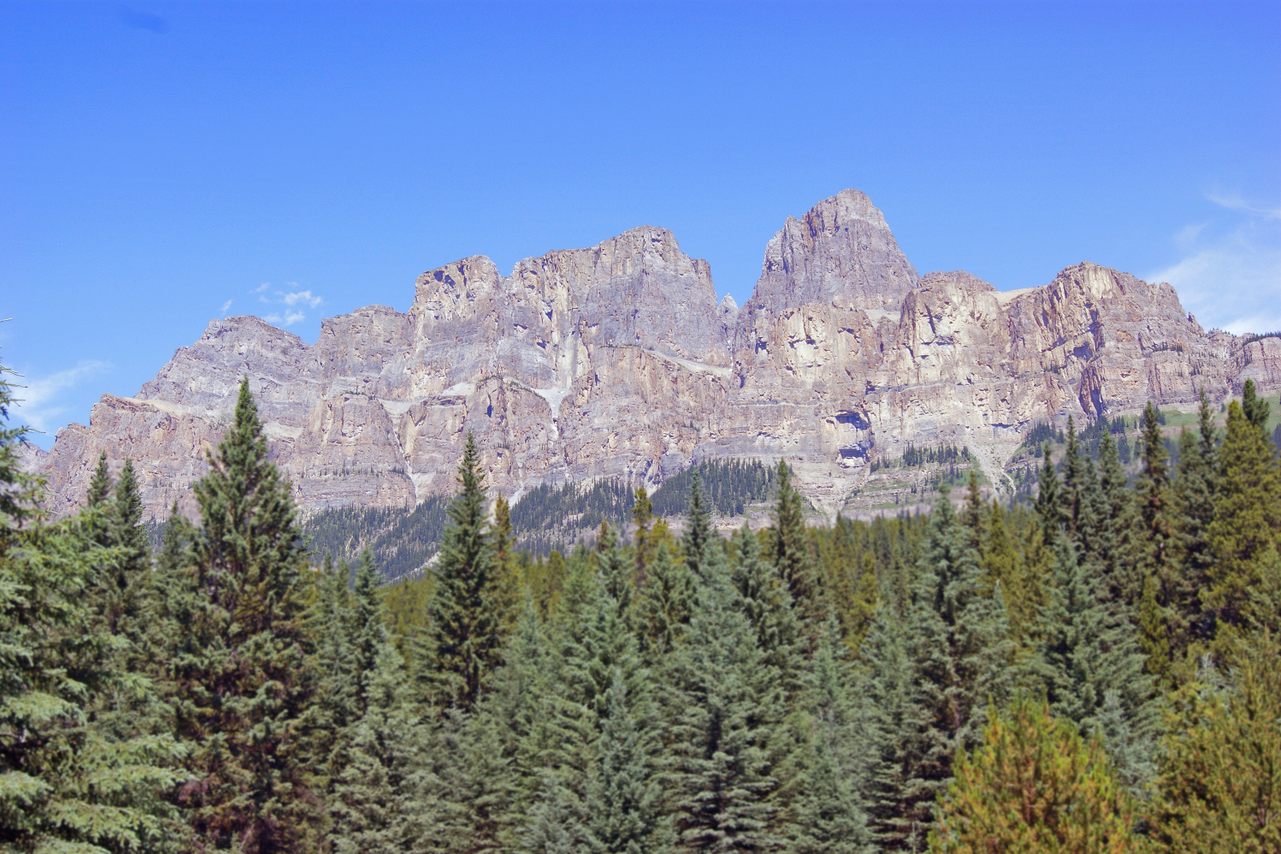
9. Eisenhower Tower
A name change of this 9,000-foot-tall ridge plunged Castle Mountain into a uniquely Canadian scandal. On January 10th, 1946, General (and not yet president) Dwight D. Eisenhower was due to arrive at the Ottawa Canadian Club as the guest of honor. World War II had just come to an end the summer before, and the tremendously popular general was completing an international victory lap across the Allied nations. Inspired by another gift given to Eisenhower—a Scottish Castle—Canada’s Prime Minister Mackenzie King had an idea. “We have no ancient castles in Canada, but we have something more enduring, we have ancient mountains,” he said. King quickly had the name changed to Mount Eisenhower, which ignited local protests. Finally in 1979, the Permanent Committee on Geographical Names agreed to revert to the name Castle Mountain. A smaller pinnacle on the eastern side became “Eisenhower Tower” as something of a consolation prize to the then-deceased American general.
Eisenhower Tower, Castle Mountain, Eldon, Alberta, Canada
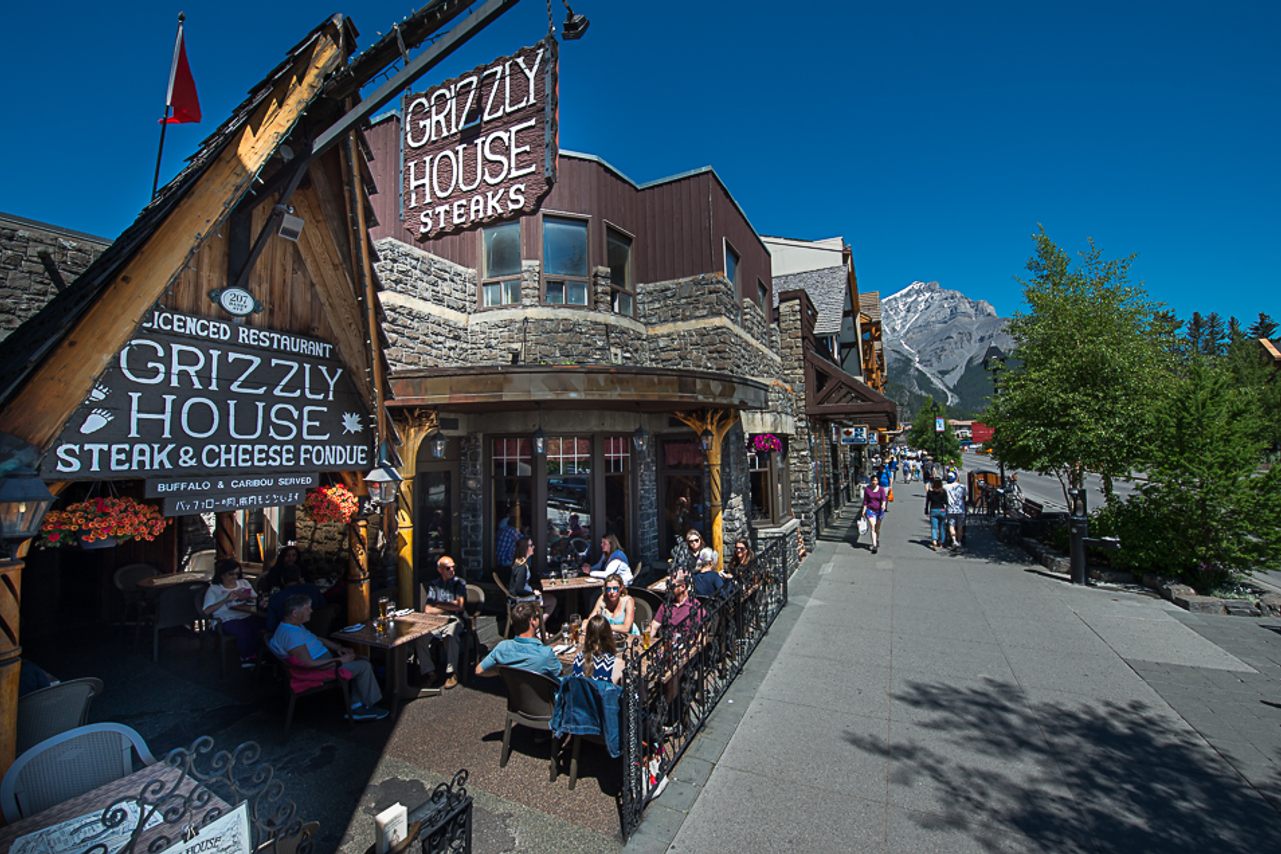
10. Grizzly House
A 1985 article about the Grizzly House Restaurant made sure to mention the telephones at each table, just in case diners “wanted to pick up somebody at another table.” Established in 1967, Grizzly House began as a cafe intended to foster the area’s Beatnik, musical, and artistic community. It later changed to a disco, the first in Western Canada, bringing with it dancers and touring musicians. The establishment earned “a reputation for attracting swingers.” Needing to sell food in order to keep its liquor license, the owners made a deal with the Chinese restaurant next door, which would deliver food through a hole in the venues’ shared wall. When the neighboring restaurant closed, the cuisine was replaced by fondue served with a selection of wild game like alligator, caribou, and ostrich. The current-day spot winks at its history with its “For Lovers and Hedonists” tagline, as well as the ’70s-era music and still-functioning phones with a telephone directory on the back of the menu.
Grizzly House, 207 Banff Ave, Banff, Alberta, Canada, T1L 1B4
